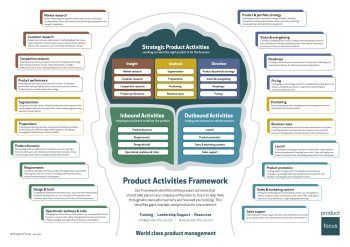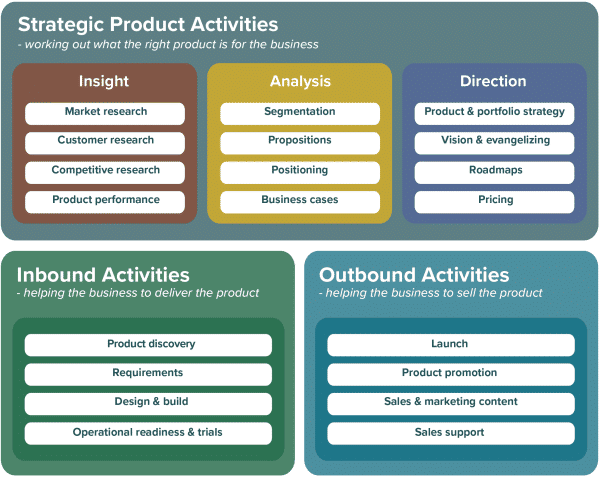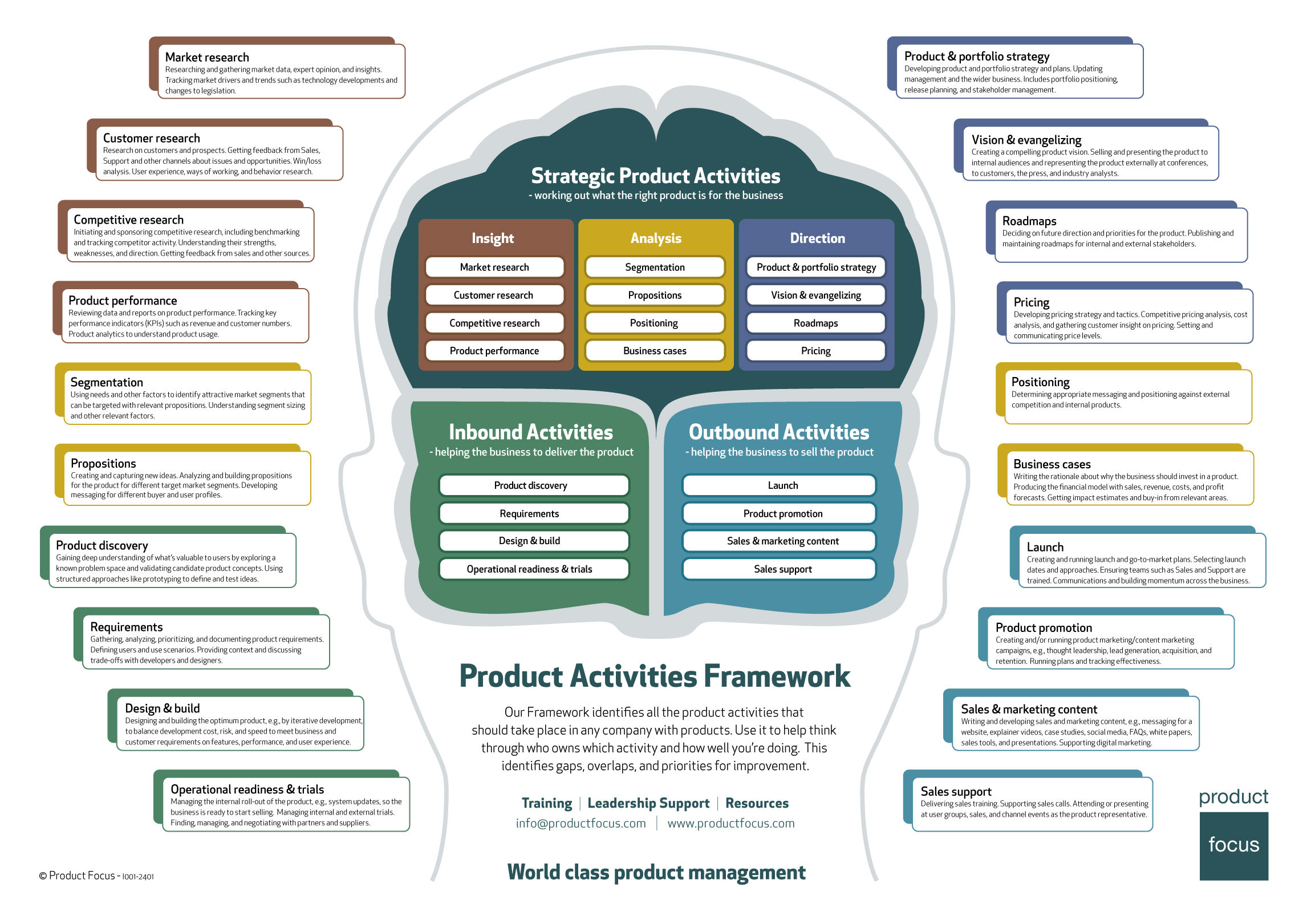
While the world of product management is constantly changing, many of the essentials of product management remain the same. You can think of these essential items as a product activities blueprint, or Product Activities Framework.
Product management is about making sure we’ve got the right proposition for the right audience with the right messages. It’s still about building the right product for the customer. It’s still about making sure the product makes commercial sense for the business as well as the customer. And it’s still about providing leadership within the organization at a product level.
However, there are a number of areas that I have seen changes. There is an increasing emphasis on product managers needing to understand their customers and markets in more depth. In B2B companies selling to big customers, there is a greater focus on a productized approach, i.e. a focus on repeatability and reusability to give economies of scale and greater profitability – rather than delivering a series of projects. Moreover, product management is taken more seriously in many companies. It’s considered a profession rather than a job and given a seat at the top table.
Another key thing that has changed is the product management of software-based products. This includes the rise and rise of Agile software development approaches. It includes a much stronger focus on the user experience and the discovery techniques used to find out what customers value. It also includes much more use of data and customer insight to drive product design. These ideas have now spread across all of product management.
The Product Activities Framework
We produced the first version of our Product Activities Framework 14 years ago. Created for product managers, product marketers and others that work on products, the framework shows all the product management activities that take place in a company with products. It helps product people think about who does what, what they own, what’s done by others, and what might be missing.
The framework groups activities into three key areas. Strategic Product Activities which are about working out what the right product is for the business. Inbound activities which are about working within the business to help deliver or support the product. Also, Outbound activities are those outward-facing activities that help sell the product.
These three areas cover 20 different activities. However, it’s unusual for one role to own all of these activities; they are usually split across a number of different product roles, including Product Management, Product Marketing, and Product Owners.
So, what’s changed?
Clients consistently give us great feedback on how useful they’ve found the framework, and now we’ve made it even better!
This new update reflects the trends we’ve seen emerging and now establishing themselves as a core part of product management.
In the updated framework, most of the Strategic Product Activities remain unchanged and are as important as ever to professional product management.
In the Inbound Activities, we’ve added ‘discovery and design’. This is the process of defining and testing a hypothesis by building mock-ups, prototypes, MVPs, and product versions to help understand what is valuable to customers. It’s about using these insights for product design and to improve the customer and user experience.
We’ve also tightened up some of the Outbound Activities to talk more about significant developments in the digital space like content marketing and supporting digital marketing.
Product management means different things to different people
If you’ve only seen product management in action in one or two companies, it’s easy to assume that’s the way it’s done everywhere else.
We work across the globe, and we know product management continues to be done differently from one company to the next. For example, in startups, it’s done by senior management, whereas in large multinationals it can be fragmented across a range of specialist departments.
Another variable affecting product management is the level of maturity the function or department has. Many companies are just beginning to introduce product management; others do it well but have no one with the title of product manager.
Also, guess what, not every product out there is a mass-market online software product like Facebook or Spotify. In our 2019 Industry Survey, only 21.2% of product people managed software-only products.
That means the job of product management in the majority of companies is not dealing with just software. It can involve physical products, services, selling to businesses, working with partners, internal product management and the challenge of handling multiple products in multiple markets.
More than that, as a product manager, your context defines what you need to do in your job. The type of product you manage; your market; your level of seniority; the resources available; the maturity of product management in your business, all contribute to what’s important. Furthermore, you’re usually not starting with a clean sheet … you inherit a situation and have to make the best of it.
In short – it’s complex and messy.
That’s why on our training we don’t prescribe one single approach to product management – we provide you with a toolkit of best practice and approaches allowing you to select the ones that make sense to your context.
A tool to help understand product management
Using a tool like the Product Activities Framework can help make sense of who does what in any company. You can download the latest (Product Activity Framework Infographic here) and stick it on your wall.
Ian Lunn
Director, Product Focus





Leave a comment